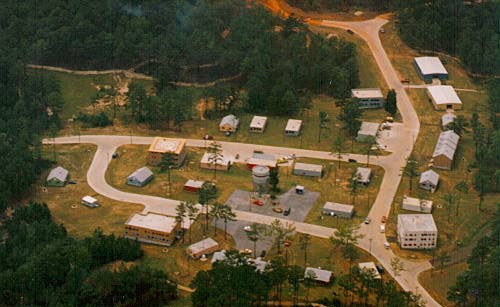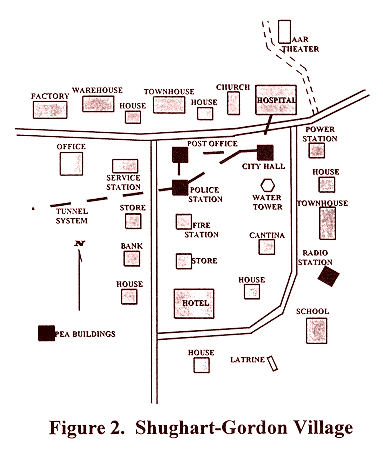










SITUATION
You are the commander of a platoon that is part of Battalion Landing Team (BLT) 1/5. BLT 1/5 is the Ground Combat Element (GCE) of the 31st Marine Expeditionary Unit (MEU). 31st MEU’s higher headquarters is Joint Task Force (JTF) Cortina. The JTF has been in the country of Cortina for two weeks performing peacekeeping/peacemaking missions in support of an international humanitarian relief effort. As a result of years of internal strife and factional fighting, Cortina has experienced a total breakdown of essential services such as medical treatment and food and water distribution. Though the majority of the local populace is supportive of JTF Cortina’s mission, there are armed factions that have been very active in attempting to undermine this mission. Your platoon consists of 42 Marines (three 13-man squads) plus four Marine Scout/Snipers, two Marine Interrogator/Translators and two Navy Corpsmen.
SPECIAL SITUATION
The following Rules of Engagement (ROE) apply:
1. Necessary and proportional force is authorized to control disturbances and disperse crowds threatening essential civic order.
2. Persons observed committing serious criminal acts will be detained using minimal force necessary up to and including deadly force. Serious criminal acts include homicide, aggravated assault, rape, arson and robbery. If you have exhausted all reasonable graduated response techniques and, in your opinion it appears that there will be a loss of human life, the use of deadly force may be used (as a last resort). Loss of life includes civilian on civilian violence.
3. Deadly force is not authorized to disarm Cortinians, enforce curfews, or stop looting, unless those individuals involved engage in hostile acts or demonstrate hostile intent. The looting or loss of non- sensitive equipment from U.S. sites or convoys are not grounds for the use of deadly force. Burglary and larceny are defined as looting, breaking and entering or stealing. These situations only warrant the use of non-lethal force “unless” the perpetrator is armed and displaying a hostile intent. In any situation, the existence of a perpetrator with a weapon displaying hostile intent is grounds for considering hostile intent. Hostile intent is defined as: pointing a weapon at an individual(s); holding hostages; discharging a weapon; striking an individual(s) with a weapon; and threatening to use the weapon or evidence of recent use of a weapon.
4. The medical ROE allow for U.S. forces to perform first aid for any individual (to prevent loss of life). However, civilian medical services must perform routine medical services for local nationals.
Your platoon is conducting unannounced checkpoint operations to demonstrate U.S. presence and to capture/detain individuals on the Counterintelligence Black List. Your have the Black, Gray and White list. Your company commander has decided that the first checkpoint will be located on the western approach to Shughart-Gordon – on the road in front of the factory (building number 2). The following sequence of events takes place:
1. You receive a spot report indicating that the number one target on the Black List is approaching your checkpoint. He is driving a four-wheeled drive vehicle. He is reported as armed and dangerous. This vehicle is now approaching the checkpoint.
2. While spot-checking vehicles, one of your squads finds weapons (semi-automatic rifles and handguns). The driver of this vehicle flees to the south. Your receive information that he entered the subterranean tunnel system immediately south of an office building (building number 2).
3. A vehicle approaching the checkpoint from the west picks up speed and attempts to run through the road barrier. The vehicle crashes and the driver is injured.
4. You hear shots fired from the vicinity of the general store (building number 15). Two local business owners approach you with a wounded civilian. They state that the wounded individual was stealing from their store.
REQUIREMENTS
In a time limit of 30 minutes decide on how you would position your platoon to operate the checkpoint and relate the orders that you would issue to your platoon for each of the above events. Remember that these events occurred in sequence. Be prepared to provide an explanation of your plan and possible alternatives should the situation either escalate or deescalate with each event.

The MOUT Homepage Hot Links:
Designing TDGs: A Tactical Decision Game Workbook (Marine Corps University)
Peace Operations Training Vignettes With Possible Solutions (CALL)


| HOME | CONCEPTS | DOCTRINE |
| OPERATIONS 1 | OPERATIONS 2 | TECHNOLOGY |
| COMMERCIAL | RESEARCH | MOUT FORUM |
| COMMENTS | SIGN GUESTBOOK | VIEW GUESTBOOK |
| UNITS/IMAGES | DEDICATION |

